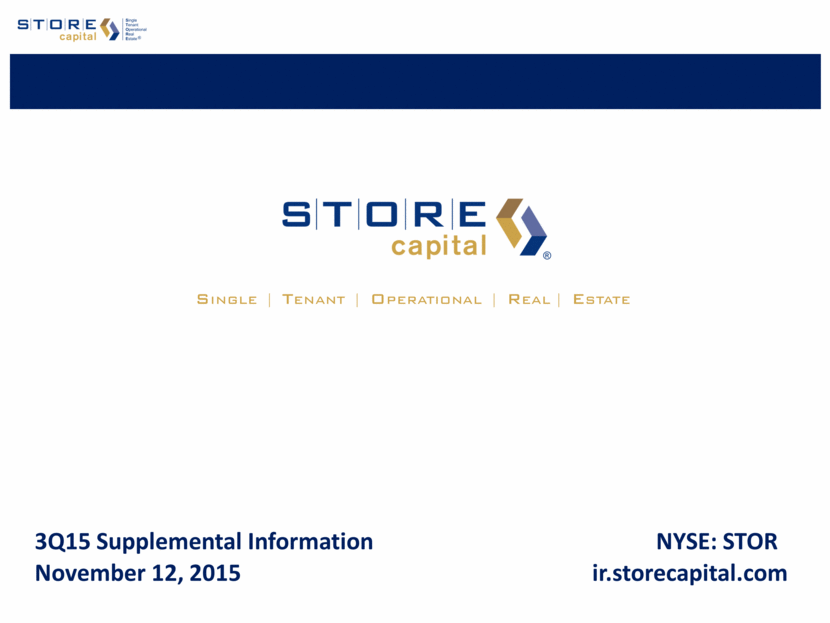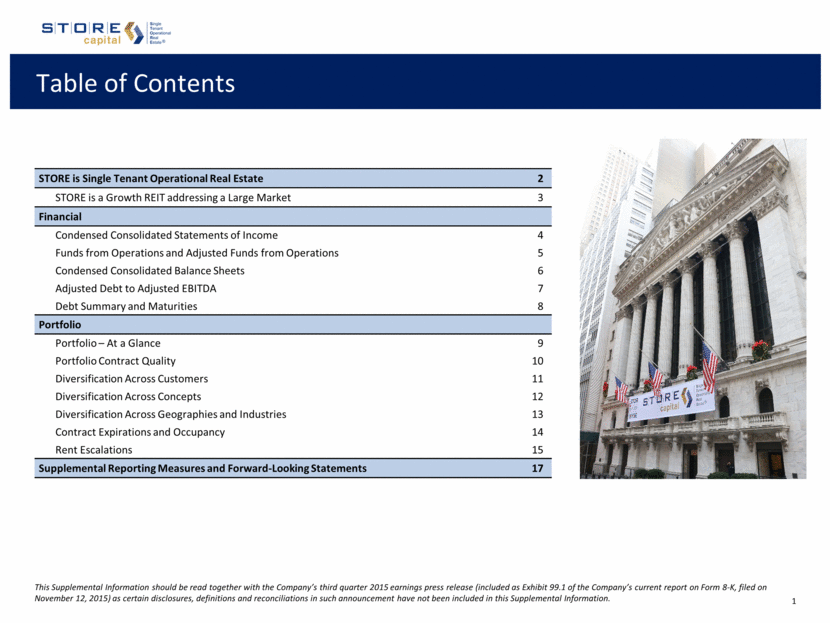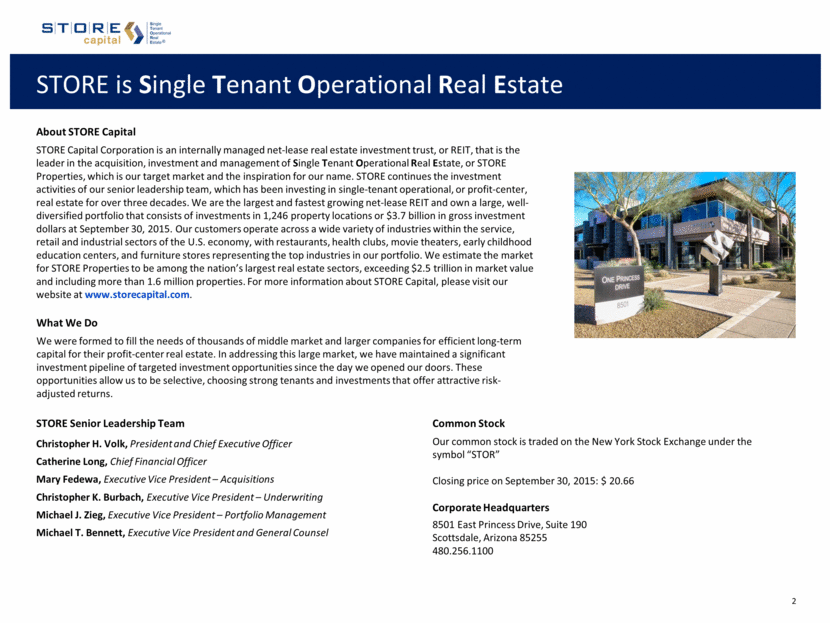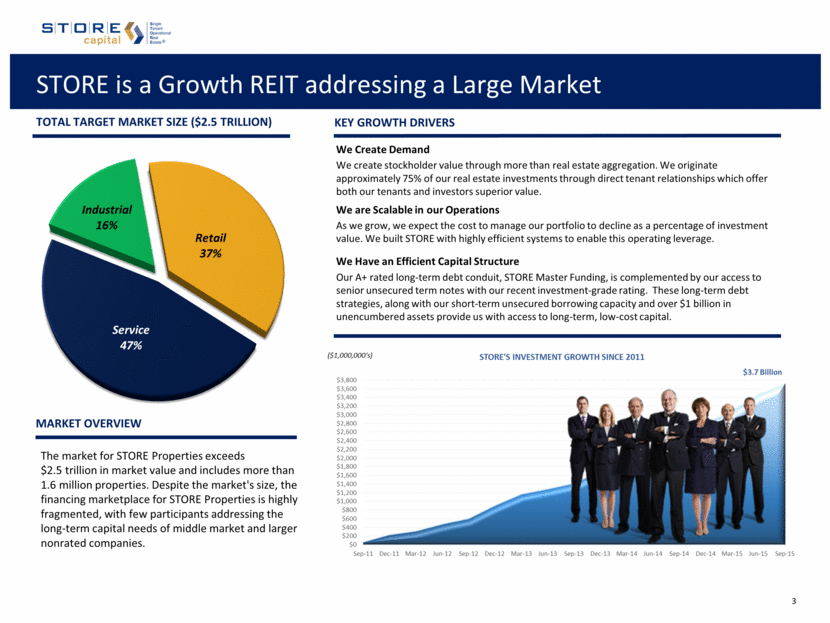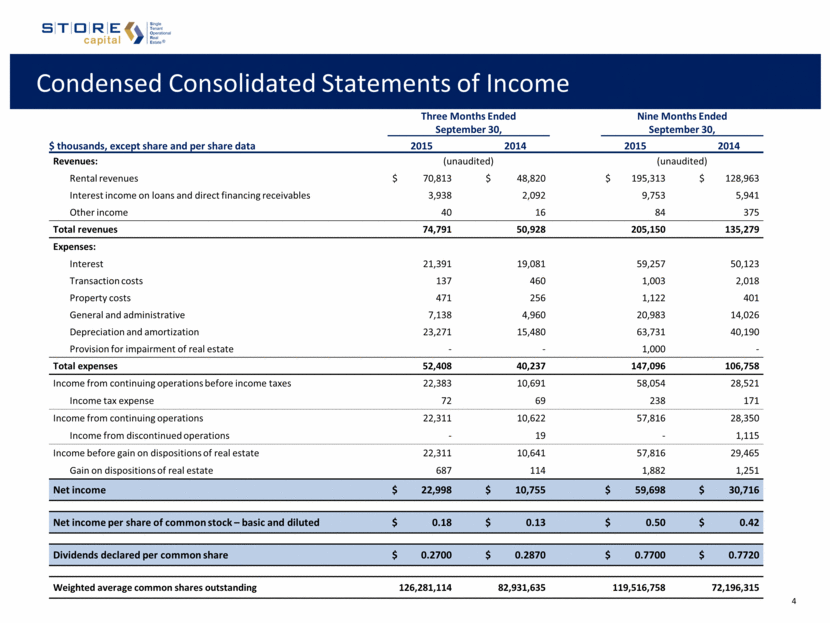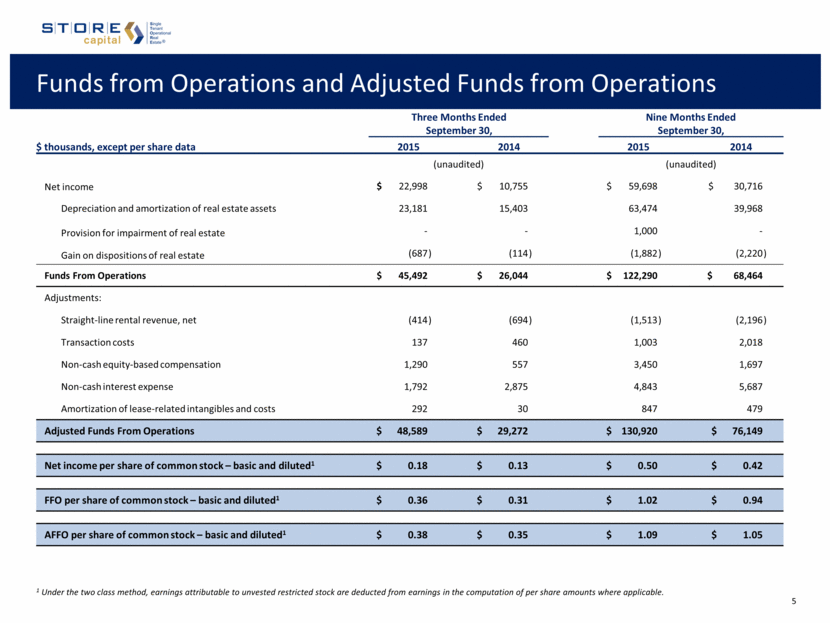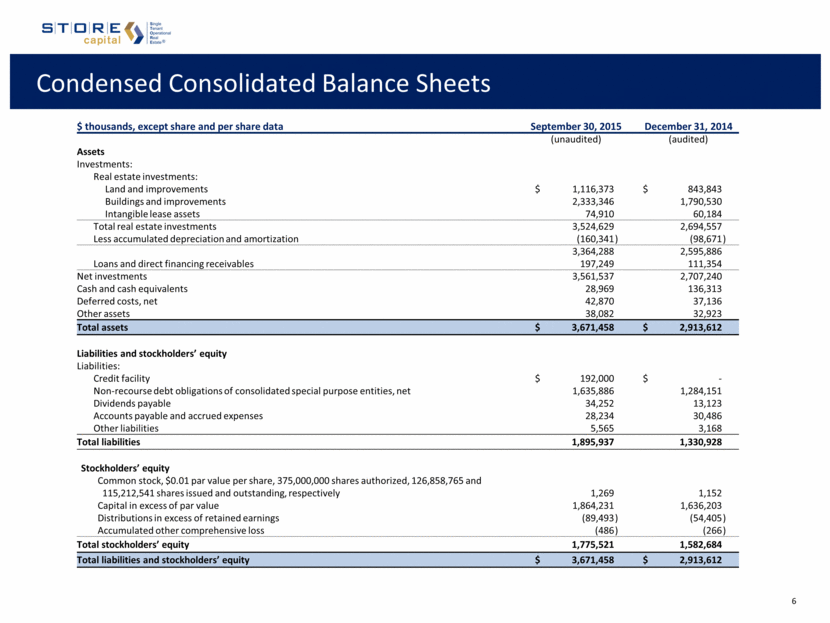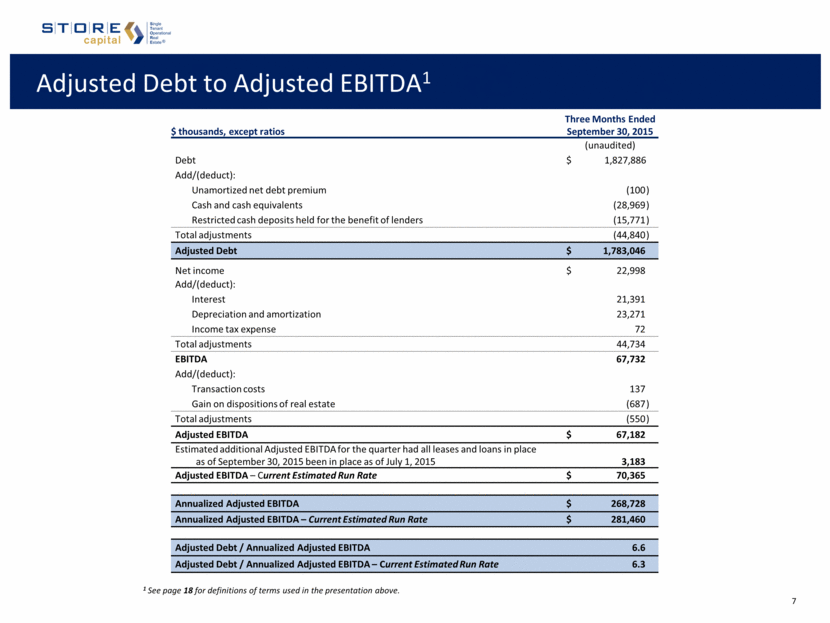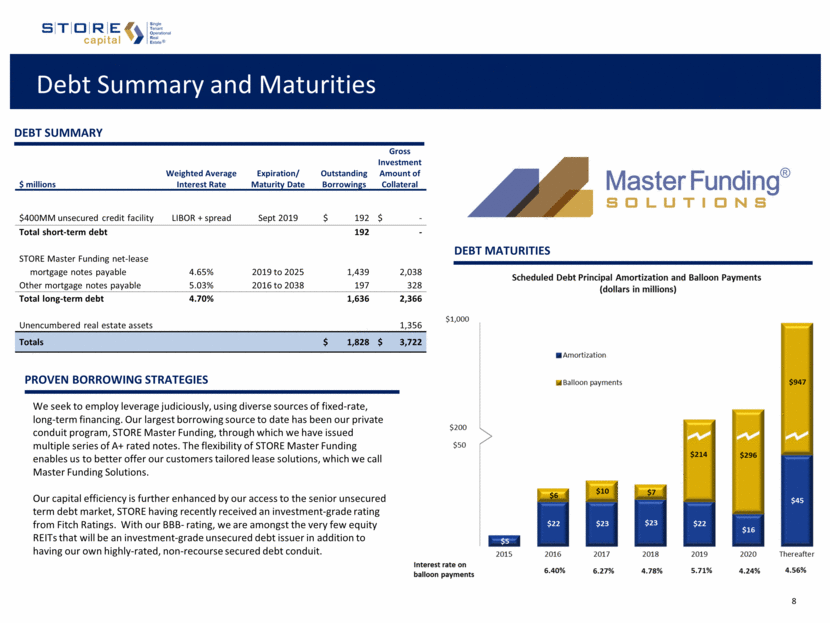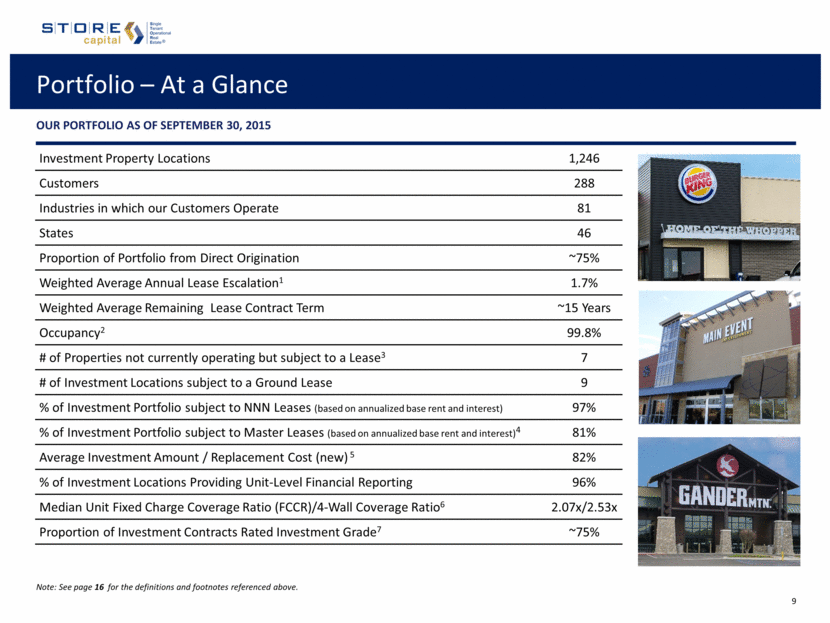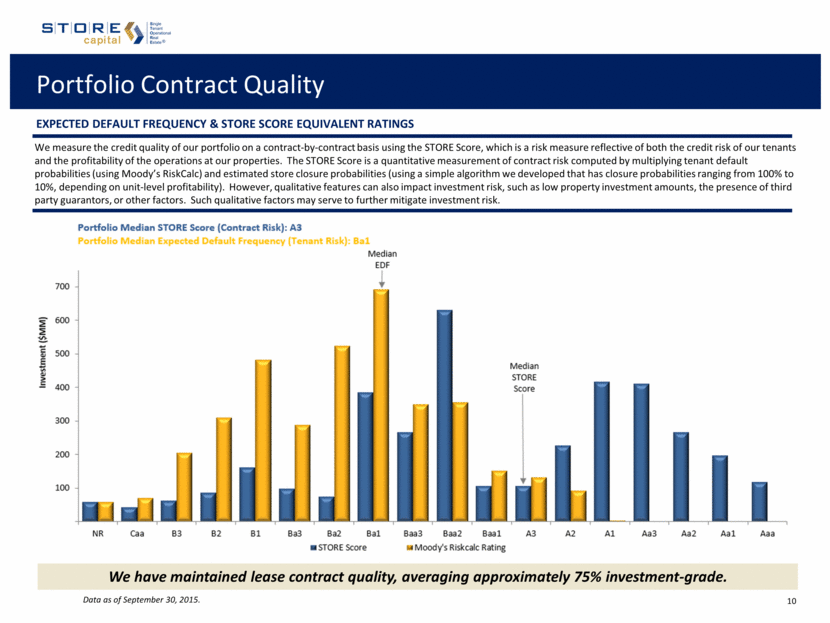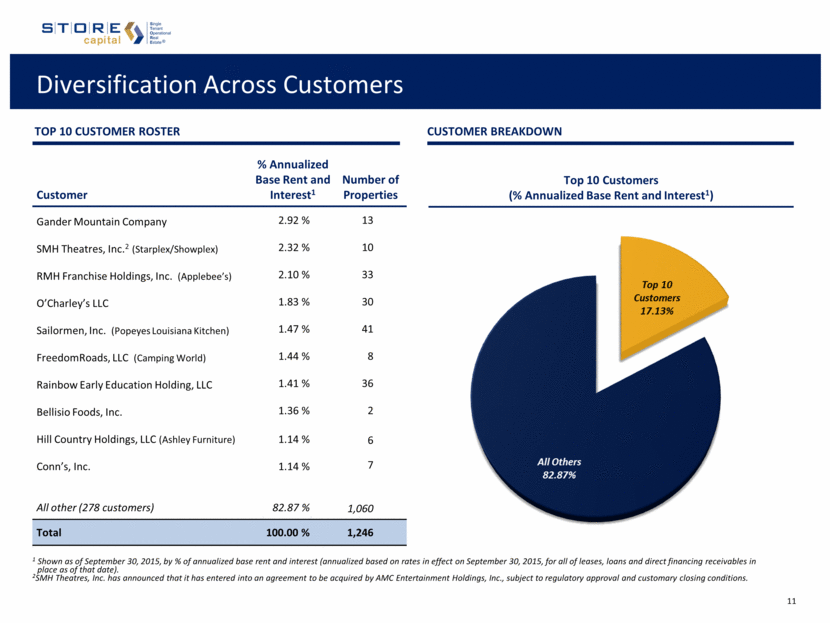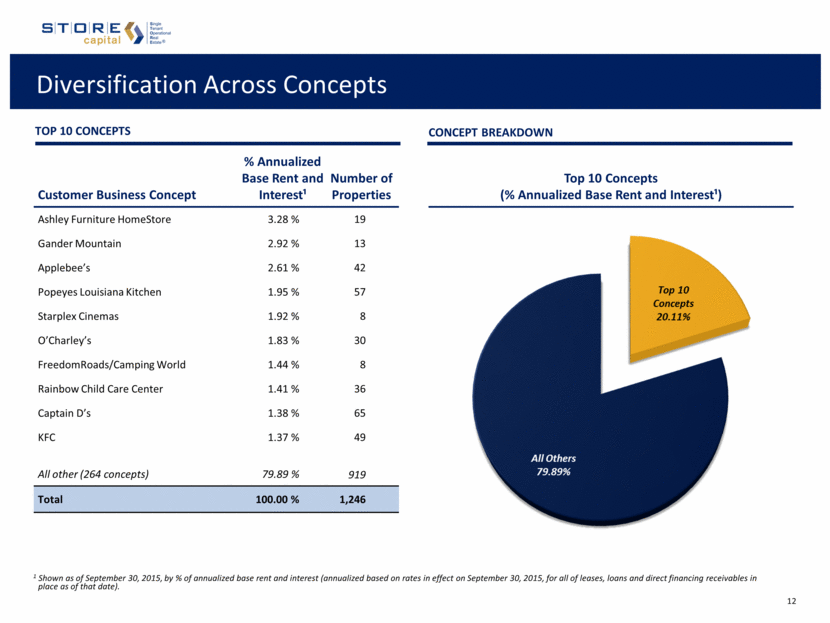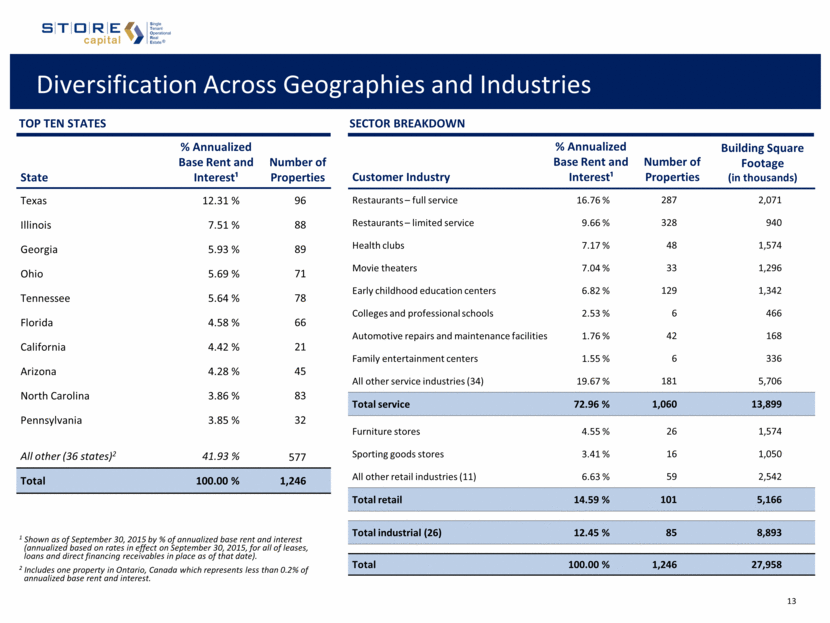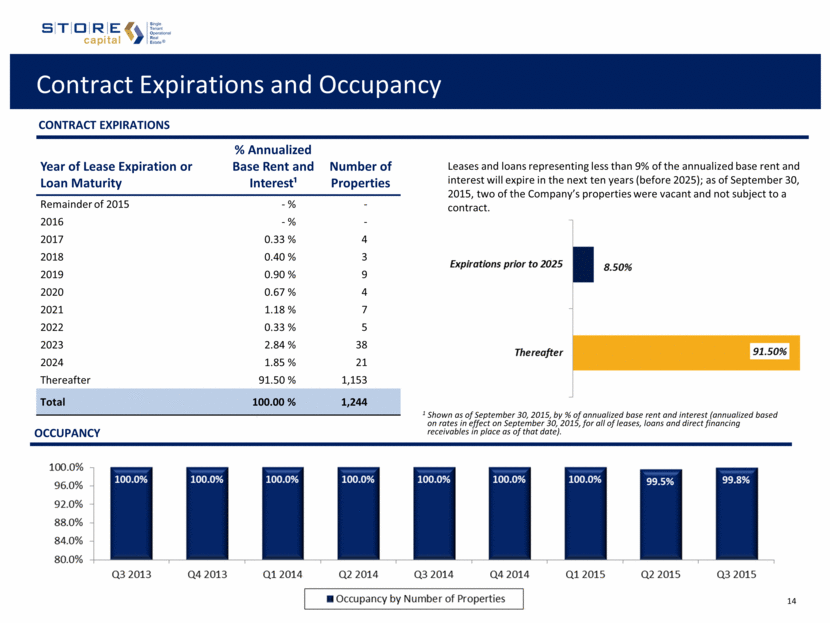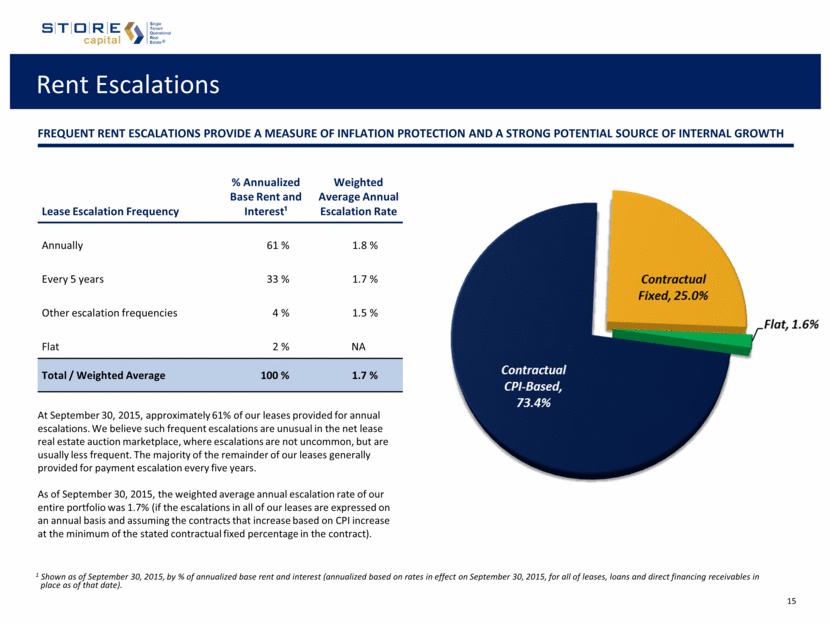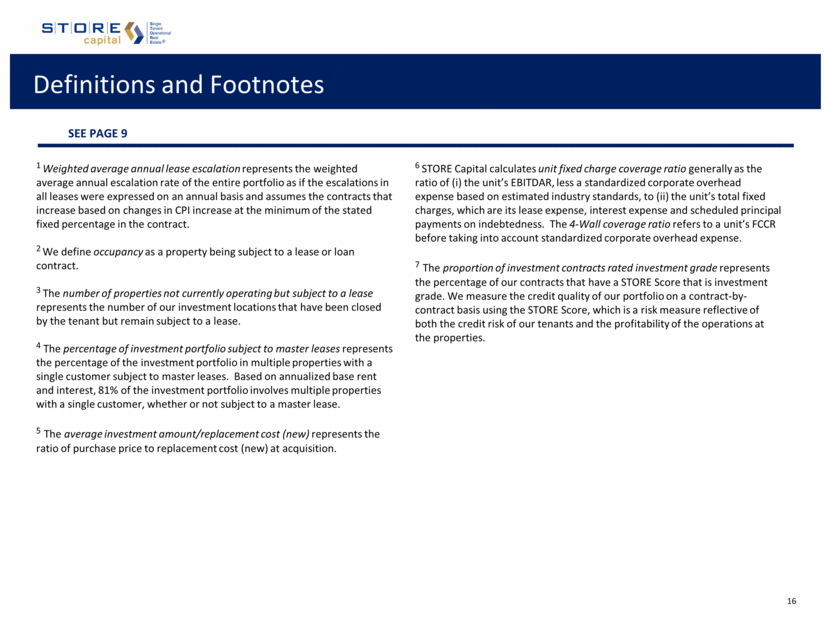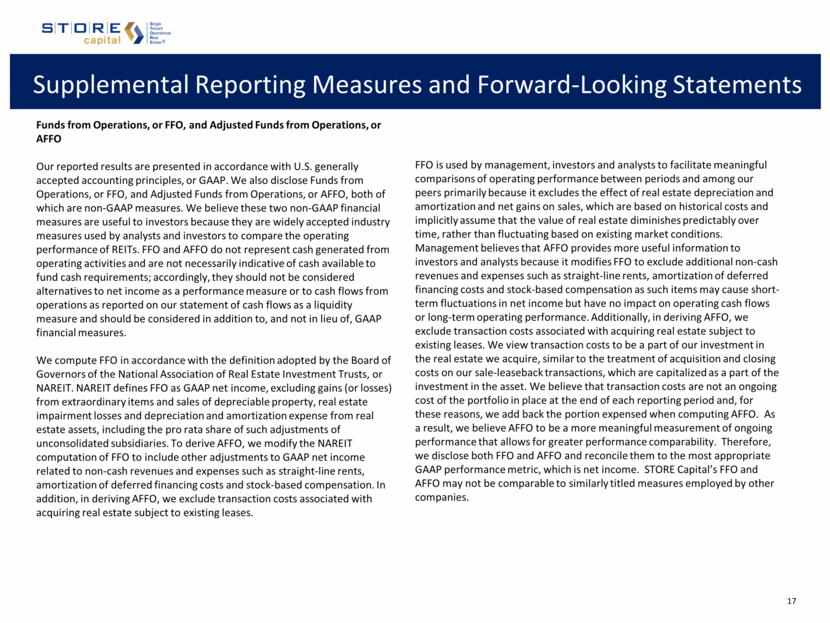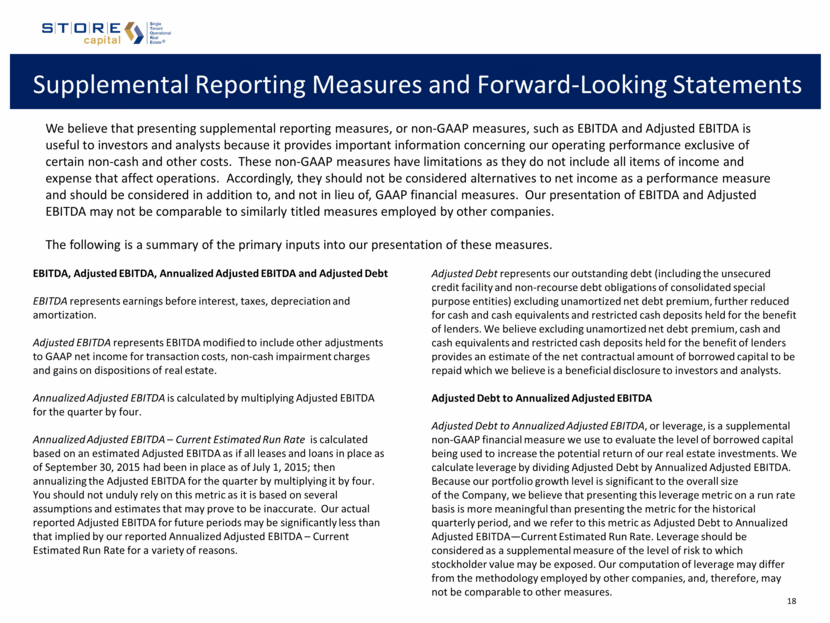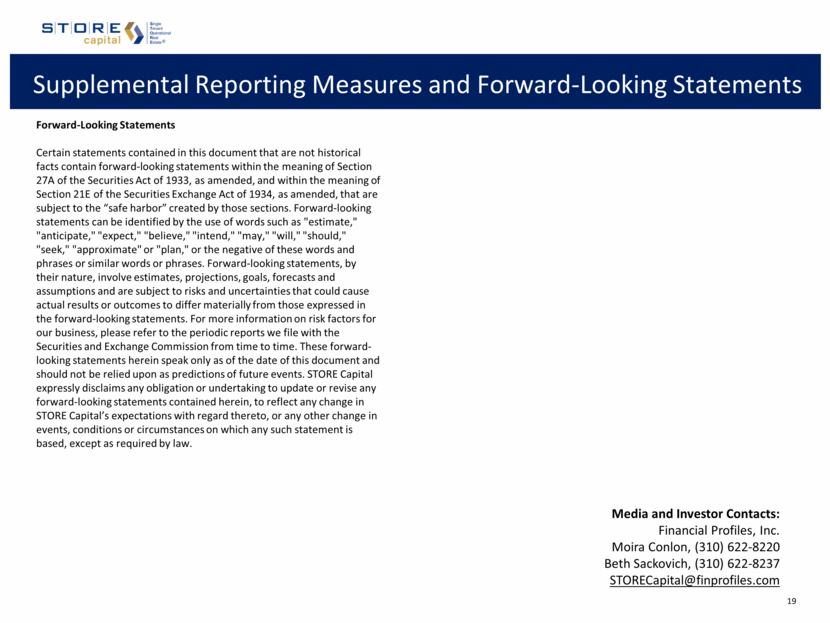Free signup for more
- Track your favorite companies
- Receive email alerts for new filings
- Personalized dashboard of news and more
- Access all data and search results
Filing tables
Filing exhibits
Related financial report
STOR similar filings
- 2 Dec 15 STORE Capital Commences Follow-on Offering
- 23 Nov 15 STORE Capital Announces Issuance of $175 Million of Senior Unsecured Notes
- 17 Nov 15 2015 Third Quarter Presentation November 2015 The LEADER in Middle Market Real Estate Capital Solutions SINGLE TENANT OPERATIONAL REAL ESTATE
- 12 Nov 15 STORE Capital Announces Third Quarter 2015 Operating Results
- 25 Sep 15 STORE Capital Announces Expanded Credit Facility
- 15 Sep 15 STORE Capital Declares Third Quarter Dividend of $0.27 per Common Share Represents an increase of 8 percent over prior quarter
- 19 Aug 15 2015 Second Quarter Presentation August 2015 The LEADER in Middle Market Real Estate Capital Solutions SINGLE TENANT OPERATIONAL REAL ESTATE
Filing view
External links
